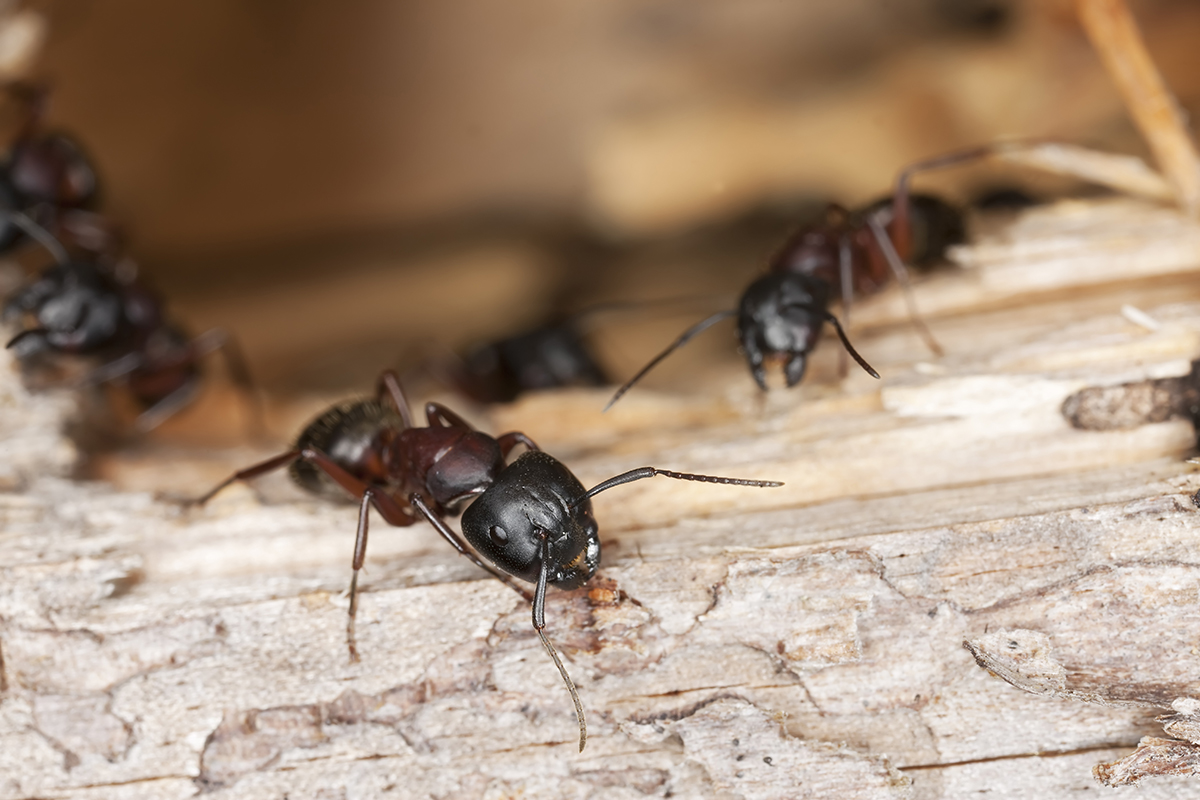WRITER | JULIE FORD
For many homeowners, spring weather encourages cleaning both inside and out, and sometimes a good spring cleaning can reveal ants quietly living in the home.
In Michigan, carpenter and odorous house ants seek water-soaked wood below pipes, drains, dishwashers, showers, and leaky roof shingles for nesting sites. Have a washing machine with a leak? Better check the floor underneath. Was there an ice dam over the winter that caused a leaking mess in a wall? Hire a contractor to expose the soaked wood completely, replace it, and fix the reason for the ice dam.
Carpenter ants seek water, meat (think pet food sitting out), and sweets. Odorous house ants, just a little smaller than carpenter ants, seek sweets. They carry these easily accessible household foods back to a nest that can reach 100,000 in a colony. I happen to have firsthand experience with prying back the plywood of a rotted floor and finding a massive carpenter ant nest. I slowed them down with Raid® and scooped them out with a shovel!
“Carpenter ants and odorous house ants can cause significant damage over time,” explains Luke LaLone, a 14-year pest control veteran and owner of Stingers Pest Control in Holland. “While termites actually eat wood, carpenter and odorous house ants chew the wood but do not eat it.”
For carpenter and odorous house ant control, LaLone says to call a professional if you still see five to ten ants in the home after applying a DIY exterior home treatment – this is an indicator that the nest is in the home.
Smaller, but no less skin-crawling, are several other ant species typically found in Michigan – pharaoh, pavement, ghost, and crazy – that LaLone says can’t be distinguished except under a microscope. For a DIY fix, LaLone suggests using TERRO® ant bait, available at many retailers, and advises that “patience is key.”
“It can take up to two weeks for full results, depending on how far they are traveling and the size of the colony,” explains LaLone. “They don’t die instantly; they take the bait back to the colony, bring the food to the queen, and kill the whole colony that way.” This means the homeowner needs to endure watching ants moving about and taking the bait to the nest. “Don’t smash the ants – let them take the bait back,” he advises.
If you are about to have people over and notice an ant issue, LaLone says to go ahead and use Raid® but realize that the “instant kill” is only a quick fix and the ants will simply move to another spot.
There are other key things homeowners can do around the house to keep ants where they belong:
- Trim branches and bushes away from the home. Envision an undetected roof leak and tree branches touching the roof – perfect conditions for wood-nesting ants to breach the home.
- Use stone instead of mulch for landscaping. Carpenter ants can survive the mulching of an infested tree and end up against a home’s foundation. If mulch is used, remove the old mulch completely before installing the new mulch. Price out the cost of stone against years of mulch replacement – stone will be cheaper in the long run.
- Regular house cleaning and vigilance are key to noticing an ant problem early. Perform a monthly walk-through of the basement and inspection of the attic with a flashlight to look for water damage or leaks and fix them right away.
Ants are smart, hard-working, and social, and while those are admirable traits for anyone, we don’t need to witness their ingenuity in our home. A DIY approach is fine for dealing with just a few ants, but calling a professional is also a good idea to keep them quietly marching only where they belong.








